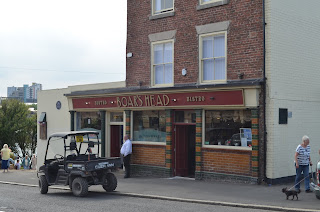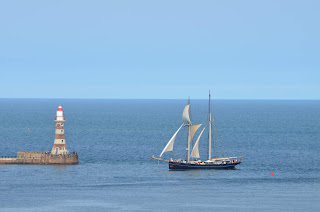Four years after the last Liverpool meeting of the Young Lads’ Debating and Literary Society, we were back for a few cultural pints. As before, we started our tour in the North Western, a JD Wetherspoons pub at Lime Street Station.
John and Tony Parry. Two young lads from The Wirral. John’s trip for a
pint was only a few miles, but Tony came especially from Australia for the
beer
Next stop, Dr Duncan’s, where I am happy to report that the ale was
first class.
Dr Duncans. Saint John’s Lane, Queen Square, Liverpool L1 1HF
A few pints in The Grapes. A genuinely wonderful pub. The large
character in the middle of the photograph is Eddie Donnelly, indicating the
number of pints he can drink in an evening
Jones the Beer, Jan Becall, Degga and Inspector White of the Yard about
to enter The Grapes.
The Grapes, 60 Roscoe Street, L1 9DW
Little Phil and Inspector White at
the bar in The Grapes
A grand gathering in The Grapes, where the beer was exceptional
Degga and Ron Becall
outside The Pilgrim, where the beer wasn’t exceptional
Ye Cracke, a famous Liverpool institution. Originally named The Ruthin
Castle, this pub acquired the nickname ‘Ye Cracke’ because the small original
bar only held 10 people. This was extended into the adjoining property in 1876.
John Lennon and Eddie Donnelly both frequented the pub, albeit at different
times.
Ye Cracke, 13 Rice Street, Liverpool, L1 9BB
Johnny Greene in Ye Cracke, indicating that it is “Time for a Pint”
Johnny Greene in Liverpool’s most architecturally famous pub, The
Philharmonic. He is demonstrating his undoubted enthusiasm for pies
The Philharmonic, 36 Hope Street, Liverpool, L1 9BX
Last pub of the day. Ma Egerton’s
9 Pudsey Street, Liverpool, L1 1JA



























































